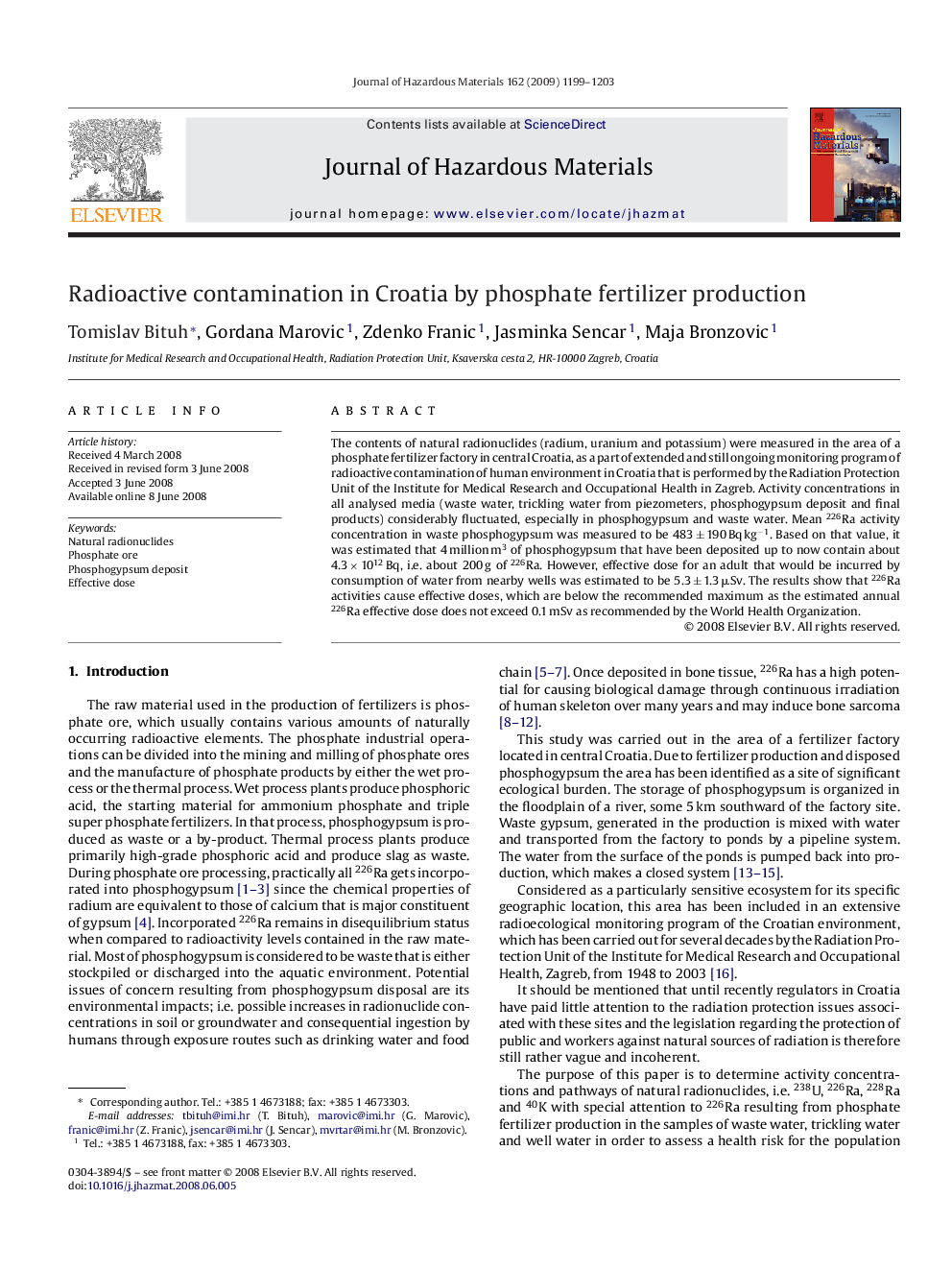| Article ID | Journal | Published Year | Pages | File Type |
|---|---|---|---|---|
| 582422 | Journal of Hazardous Materials | 2009 | 5 Pages |
Abstract
The contents of natural radionuclides (radium, uranium and potassium) were measured in the area of a phosphate fertilizer factory in central Croatia, as a part of extended and still ongoing monitoring program of radioactive contamination of human environment in Croatia that is performed by the Radiation Protection Unit of the Institute for Medical Research and Occupational Health in Zagreb. Activity concentrations in all analysed media (waste water, trickling water from piezometers, phosphogypsum deposit and final products) considerably fluctuated, especially in phosphogypsum and waste water. Mean 226Ra activity concentration in waste phosphogypsum was measured to be 483 ± 190 Bq kgâ1. Based on that value, it was estimated that 4 million m3 of phosphogypsum that have been deposited up to now contain about 4.3 Ã 1012 Bq, i.e. about 200 g of 226Ra. However, effective dose for an adult that would be incurred by consumption of water from nearby wells was estimated to be 5.3 ± 1.3 μSv. The results show that 226Ra activities cause effective doses, which are below the recommended maximum as the estimated annual 226Ra effective dose does not exceed 0.1 mSv as recommended by the World Health Organization.
Related Topics
Physical Sciences and Engineering
Chemical Engineering
Chemical Health and Safety
Authors
Tomislav Bituh, Gordana Marovic, Zdenko Franic, Jasminka Sencar, Maja Bronzovic,
